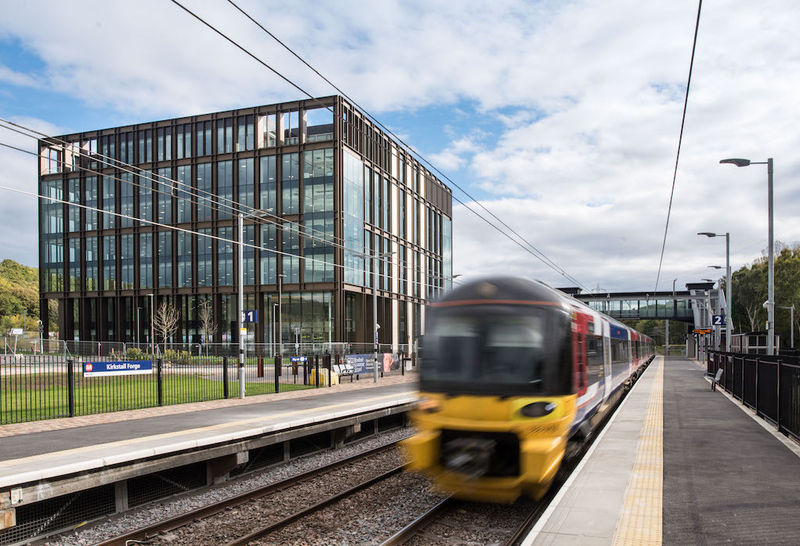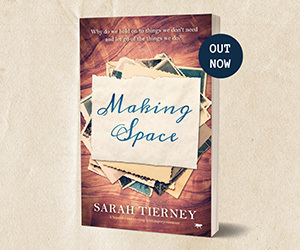Jon Howe on the £400m scheme offering a romantic vision of Leeds city living
Take a snapshot of the Leeds city landscape at any time and you will see a chiselled silhouette of famous landmarks, shiny skyscapers and towering cranes. Forever a city developing, forever in a rush to change. It is rare for a trip into Leeds city centre not to be soundtracked by pneumatic drills, scaffold being erected and the shuddering cacophony of earth and rubble being moved from somewhere to somewhere else.
Space is at a premium in Leeds, and as developers fight to make the most of every single square inch, it is developments like Kirkstall Forge that merit some recognition, firstly for proposing the most ambitious regeneration scheme seen in the city this millennium, but also for transforming a derelict brownfield site three and a half miles from the city centre whilst causing a daily nuisance to precisely no one.
Kirkstall Forge is a £400million project that will take ten years to fully complete. Already there is a 109,000 sq ft seven storey office block named ‘Number One’, which currently has 66% occupancy, and the first phase of constructing a proposed 1050 new homes has begun, with 112 three and four bedroom houses being built and due to be completed in September.

Perhaps the most public feature of the Kirkstall Forge development is its inter-connecting train station, which boasts a six-minute commute into Leeds. There is already a café bar called Butler’s on the ground floor of Number One, and there are proposals for more retail space, a gym, a playground, a primary school, an open communal courtyard and public square and waterside and woodland trails.
The positivity surrounding the scheme is hard to suppress, but it is equally challenging to find any reason not to absolutely love it. The train station was forecast to see 20,200 people use it over the course of 2018, but in five months it has already surpassed that with 21,400 commuters passing through the platform. The scheme has won a plethora of awards for sustainability but also Best Commercial Workplace and most recently Best New Build Outside London.
It is a noble project and a prophetic concept village emerging from dis-used industrial land, and while Netflix viewers of Safe might flinch at the word’s ‘gated community’, there is nothing but invention, innovation and a progressive addition to the Leeds skyline behind the entrances to Kirkstall Forge.

As a vision of building a community within a community it is certainly faithful to the kind of utopian foresight upon which it is based. West Yorkshire saw much movement of people in the 19th century industrial revolution, guided by prescient philanthropists who led the workers and cared for them. The full 57 acre development of Kirkstall Forge is inspired by Sir Titus Salt’s model village of Saltaire in Shipley, which provided mill workers with attractive and affordable homes and thus produced healthier and happier employees in the hope that it would make them more productive.
If a 21st century incarnation of that appears a little quixotic, then what is emerging in the hidden Kirkstall valley that stretches along the vast banks of the River Aire, chips away at any cynicism and misgivings and replaces them with a wholesome glow that comes from a development that cherry picks solid, old-fashioned family values and drops them right into 2018.
Promoting a healthy lifestyle and a form of community is hardly some form of outlandish Marxist theorem
Quite apart from the delivery of office space with 360 degree natural light and woodland views, there is sustainable contemporary living, perimeter exercise trails, open meadows, communal shared spaces, free bike hire for Number One office residents to have a lunch time ride along the tranquil canal toe path, and an on-site estate management team offering a ‘Leeds BID’ style site clean-up operation, along with arranging communal events, running clubs and even a dry cleaning service.
It is almost an idealistic ‘Stepford Wives’ style vision in reality and if you could somehow close your eyes and ears to Trump and Brexit, this could be the Zen existence we’ve always craved. Promoting a healthy lifestyle and a form of community is hardly some form of outlandish Marxist theorem, it’s merely a ‘good thing’ and an antidote to widespread poverty and social isolation elsewhere in Leeds. And if there is scepticism over an attempt to fabricate a ‘community’ from nothing, then developers CEG - who envisage 10,000 people living and working at Kirkstall Forge by 2027 - can point to a rich history in new communities being built on Leeds’ doorstep. Not least at Saltaire, but also closer to home in the infamous Quarry Hill complex, where fiercely proud neighbourhoods were created among the myriad branches of the high-rise concrete ode to ‘modern living’, if only to share experiences of the faulty waste disposal system and the promised swimming pool that never materialised.

At Kirkstall Forge, there is already a sense of community amongst the office workers and the rail station commuters, and that will only increase as the development progresses. Furthermore, a newly constructed bridge takes us over the railway line into the surrounding woodland and lands you in the already beguiling Kirkstall panorama which offers the wonderful Abbey, some great local pubs and a brisk walk up to Headingley and everything that offers. Meanwhile Horsforth is perhaps closer in the other direction. The Kirkstall area, of course, is already steeped in history and wherever there is a story to tell in Leeds, the people demonstrate a strong will to keep it going.
If you mention Kirkstall Forge to many of the older generation of Leeds residents, they will recall the imposing mile-long red brick wall guarding the engineering works that dominated a site much larger than the current development for centuries. Kirkstall Forge was a metalworking business that dates back to the 16th century, and was eventually bought out by GKN in 1974. There is even evidence of a corn mill on the site going back to the 12th century, providing for the monks at the nearby Abbey.
All over Leeds there are nods to former industry that is simultaneously maintaining and updating the fabric and identity of the city; not only recognising its importance, but preserving it and taking its spirit and endurance in new directions and into new centuries. Kirkstall Forge is a wonderful illustration of that; showing a way forward for society that embraces everything you need and everything you want to be. And with vast political and local business support, it is the best current example of all the various threads of a city working together in perfect harmony.




